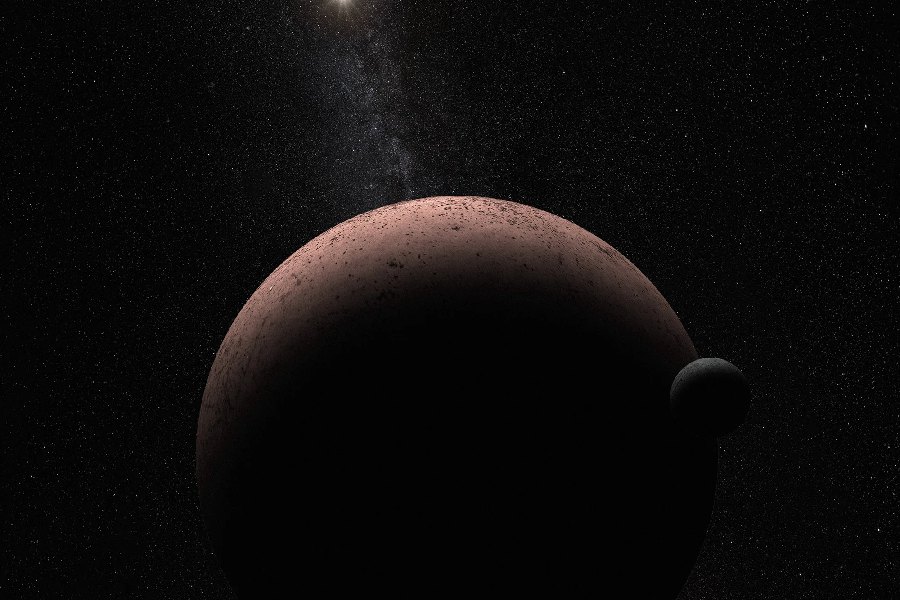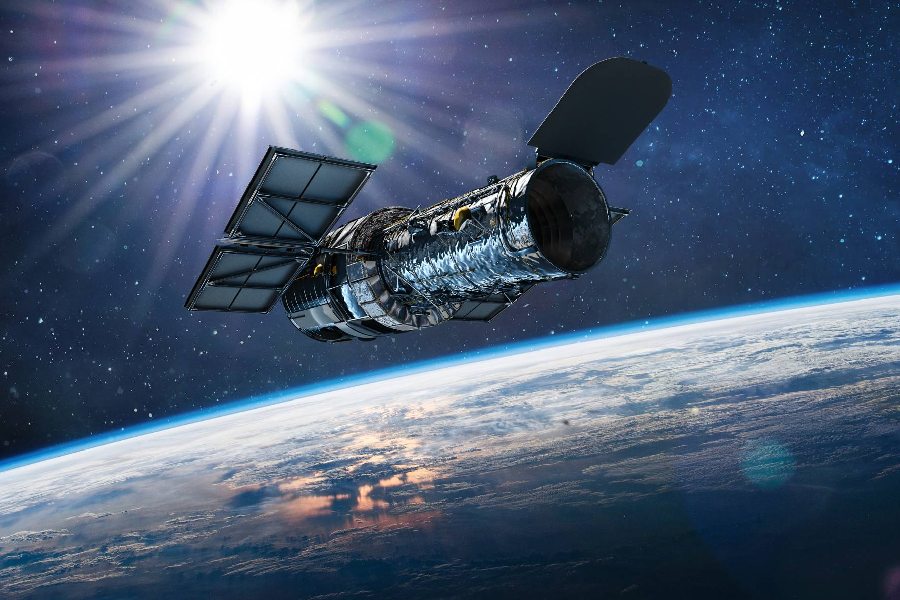Far beyond the orbit of distant Pluto lies an icy, reddish world dubbed Makemake—one of the largest and brightest residents of the little-explored Kuiper Belt. Most sizable Kuiper Belt objects appear to have moons, but mysteries swirl around this frozen planetary body called Makemake. But how many moons does Makemake have?
Discovering the number of moons around this distant dwarf planet could reveal crucial details about its mass, formation, and Solar System history. Join us as we explore this cosmic puzzle and reveal its secrets. So, does Makemake have moons? Let’s discover!

How Many Moons Does Makemake Have?
Makemake, a dwarf planet located in the Kuiper Belt, was found to have one provisional moon, which was officially designated as S/2015 (136472) 1. This moon was discovered in April 2015 through the Hubble Space Telescope observations.
The moon’s presence around Makemake provides scientists with valuable insights into its characteristics, such as mass and formation. It contributes to our broader understanding of the dynamics within the distant regions of our Solar System.
The Characteristics of MK2 – Makemake’s Only Moon
In 2015, a small moon orbiting Makemake was imaged. It was given the designation S/2015 (136472) 1, nicknamed MK2 informally. Based on observations, MK2 orbits about 21,000 km (13,000 mi) from Makemake.
Little is known so far about MK2 besides its orbit. With better observations, we can hope to determine MK2’s precise size, orbit, and composition. Further study of MK2 can reveal more about conditions in the primordial Kuiper Belt where objects like Makemake formed.
Unique characteristics and significance
Based on estimates, MK2 measures only about 175 km (110 mi) in diameter. This makes it far smaller than Makemake. MK2 is likely irregularly shaped.
Finding MK2 allowed the calculation of Makemake’s mass. This revealed a surprisingly low density for Makemake despite MK2’s small size. More moons may yet be found through further observation of the dwarf planet.
Orbital periods
Based on its distance, MK2 takes about 12 days to complete one orbit around Makemake. This period may not be stable over a long time. Gravitational perturbations from the Sun and planets could alter MK2’s orbit over time.
However, more data is needed to determine the moon’s average orbital period from Earth. Computer simulations can help model the complex gravitational dynamics acting on MK2 over long timescales and predict any irregularities.
Understanding rotational periods
Little is known about the spin rates of Makemake’s single confirmed moon MK2. Its small size makes direct measurement of MK2’s rotational period difficult. MK2 is predicted to be tidally locked as an irregularly shaped, minor moon.
If tidally locked, MK2’s rotational period would match its orbital period. This results from gravitational interactions with its planet over time. MK2 would keep one face perpetually oriented toward Makemake as it circles the dwarf planet.
Better observations may provide more clues to MK2’s spin state and any wobble or changes in its orientation. It could reveal information related to the moon’s interior structure and shape.

Use of Hubble Space Telescope to Observe Makemake’s Moons
As mentioned, the Hubble Space Telescope detected MK2 next to Makemake in 2015. The advanced cameras on Hubble captured sharp images. Through a chance observation, it revealed Makemake’s tiny moon for the first time. Additional Hubble data then refined MK2’s orbit.
Launched in 1990, Hubble keeps surpassing expectations. It excels in studying faint, distant Kuiper Belt worlds. Its stable space platform above the atmosphere allows for detections like MK2, pushing the limits of astronomy observations.
Advancements in space telescopes and observations
Advanced cameras installed on Hubble during the 2009 servicing mission were vital. They included the Wide Field Camera 3 and greatly improved Hubble’s sensitivity. This leveraged advanced processing to enable difficult Kuiper Belt object observation.
New computational analysis techniques brought out MK2. These include specialized image processing methods to maximize the detection of faint details from Hubble data. The advanced processing capabilities will improve current Hubble observations and enhance future telescope observations in space.
Discovery of Moons Around Makemake
Makemake’s lone moon, MK2, was first detected in Hubble Space Telescope images from 2015. Follow-up Hubble observations helped confirm the discovery and study MK2’s orbit around the dwarf planet. This first spotting was lucky, as Hubble observed Makemake rarely over the years.
Astronomers anticipate improved capabilities from the James Webb Space Telescope and future giant ground observatories to routinely detect more tiny moons around Makemake and comparable dwarf planets. Meanwhile, the chance discovery of MK2 reminds us that big discoveries await those with patience, persistence, and a little luck!
Alex Parker’s contribution
Alex Parker is the astronomer who first spotted MK2 next to Makemake in archival Hubble images. Parker noticed the faint moon while performing observations for his dissertation in 2015. Identifying MK2 was challenging, given Makemake’s extreme distance and surrounding background objects.
Parker was studying Centaurs and Trans-Neptunian objects when he serendipitously came across the moon in the Hubble data. His quick action in analyzing the discovery images confirmed the detection of Makemake’s first known moon.
Impact on further research and understanding
Parker sparked additional research on Makemake. New studies utilizing Hubble and ground telescopes aimed to analyze Makemake and MK2, calculating the density and mass.
As a planetary astronomer, Parker now focuses on studying the outer Solar System, leading projects exploring the Kuiper Belt. He also proposes missions for direct spacecraft exploration to understand Makemake further.
Jewitt’s contribution
David Jewitt is a professor of planetary science at UCLA. Along with Alex Parker, he co-discovered MK2 in the 2015 Hubble images and data. Jewitt has studied Kuiper Belt objects since the early 1990s when he co-discovered the first object after Pluto. His experience with icy dwarf planets was instrumental in recognizing Makemake’s tiny moon.
Influence on our understanding of Makemake’s moon system
Jewitt directed further Hubble Space Telescope observations after spotting MK2. This refined understanding of MK2’s orbit and relationship with Makemake. Jewitt continues investigating Trans-Neptunian objects and advocating future missions to the Makemake system. The discovery of MK2 encourages further exploration of this icy dwarf planet.
Conclusion
How many moons does Makemake have? Thanks to a lucky Hubble discovery and analysis, we’ve confirmed Makemake’s family has one moon. The tiny satellite MK2 traces looping orbits around its planet, though more moons likely await detection.
Explore Makemake’s emerging moons, discovering the wonders of astronomy at the dim edge of our Solar System, 4 billion miles from the Sun’s warming rays. Join us in the excitement of future discoveries as we unveil the secrets of this remarkable little world, its captivating moons, and the long-ago events that shaped it.
